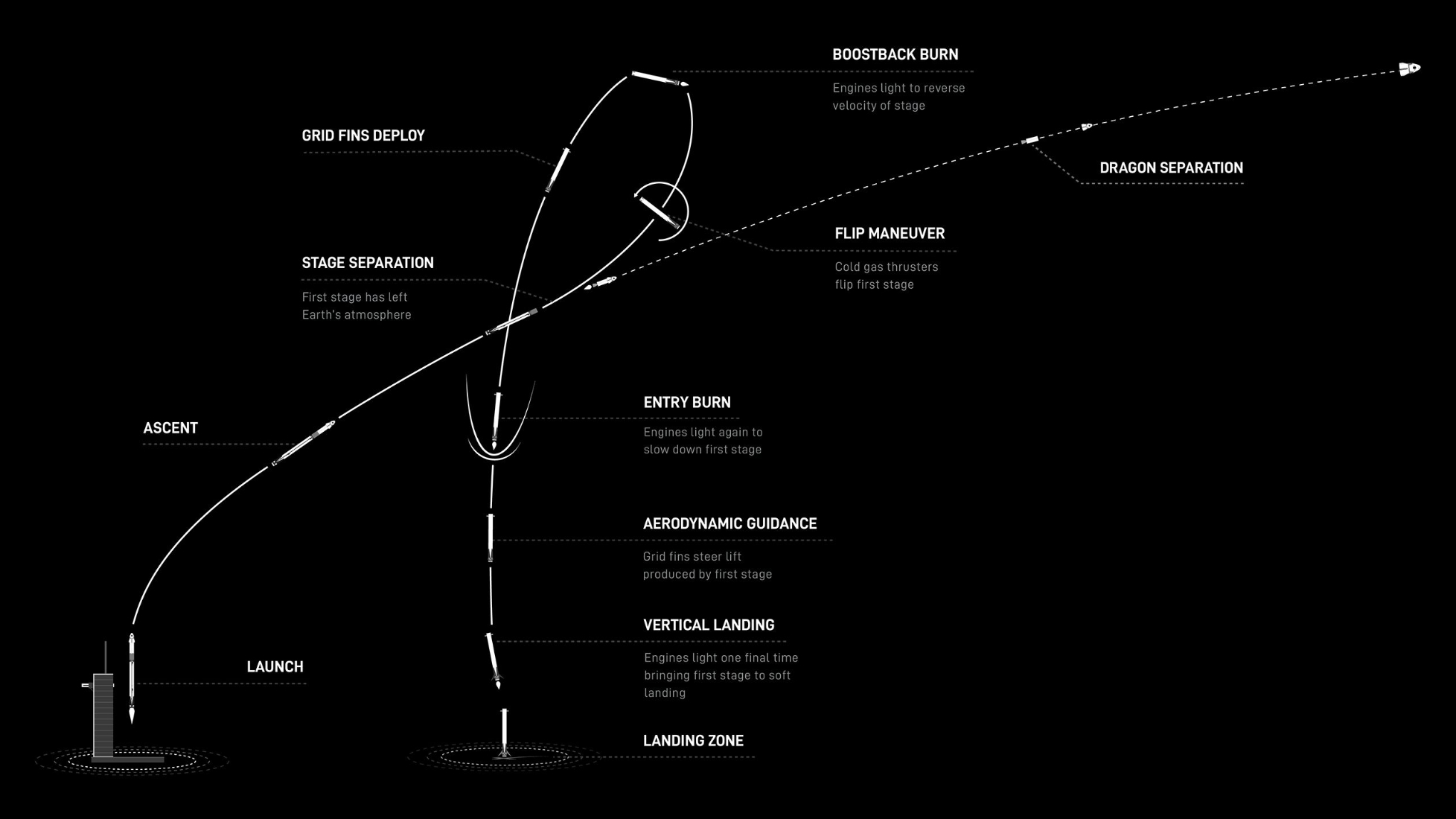What time is the SpaceX Ax-3 astronaut launch for Axiom Space? How to watch it live today
A SpaceX Falcon 9 will launch the four Ax-3 astronauts on Jan. 18 at 4:49 p.m. EST (2149 GMT).
Update for Jan. 18: SpaceX is on track to launch Axiom Space's Ax-3 mission to the International Space Station at 4:49 p.m. EST (2149 GMT) today after delaying it by a day.
Watch it live here at Space.com; coverage will begin at 2:30 p.m. EST (1830 GMT) on Jan. 18.
SpaceX will launch an astronaut crew to the International Space Station Thursday (Jan. 18) on the private Ax-3 mission for Axiom Space, but if you're hoping to watch it live online, you'll need to know where and when. And for that, space fans, we've got what you need.
The Ax-3 mission, Axiom Space's third commercial spaceflight with SpaceX, will launch four astronauts to the ISS from NASA's Kennedy Space Center in Cape Canaveral, Florida aboard a Falcon 9 rocket and its Dragon spacecraft Freedom. Liftoff is scheduled for 4:49 p.m. EST (2149 GMT).
The Ax-3 mission is commanded by former NASA astronaut Michael Lopez-Alegria of Axiom Space, with Walter Villadei of the Italian Air Force serving as pilot. Turkey's first astronaut, Alper Gezeravc, and European Space Agency reserve astronaut Marcus Wandt round out the crew as mission specialists. Together, the four men will spend at least two weeks in space on their ISS mission. Here's how and when to watch them launch and dock at the orbiting lab.
Related: Meet the 4 astronauts of SpaceX's Ax-3 launch for Axiom Space
What time is SpaceX's Ax-3 launch for Axiom Space?
Currently, SpaceX aims to launch the Ax-3 astronauts into orbit on Thursday, Jan. 18, at 4:49 p.m. EST (2149 GMT) from Launch Pad 39A at NASA's Kennedy Space Center in Florida. Current weather forecasts call for a 80% of good conditions at launch time, according to the 45th Weather Squadron of the U.S. Space Force.
Get the Space.com Newsletter
Breaking space news, the latest updates on rocket launches, skywatching events and more!
SpaceX has what it calls an "instantaneous window" in which to launch the Ax-3 mission. That means if the company cannot launch at that exact time, it will have to stand down until its next opportunity in order to reach the International Space Station. SpaceX's backup launch day may be possible on Friday, Jan. 19.
SpaceX and Axiom Space initially hoped to launch the Ax-3 mission in November 2023, but the flight slipped to January 2024 and then to mid-January as weather issues delayed a series of other SpaceX flights ahead of the mission. A planned Jan. 17 launch date was delayed to allow additional systems checks, SpaceX said.
Can you watch SpaceX launch Ax-3 online?
Yes, you will be able to watch SpaceX's Ax-3 astronaut launch online for free. In fact, you have a few options. Space.com will simulcast the livestream live here starting at 2:30 p.m. EST (1830 GMT) and on our YouTube channel, as well.
SpaceX and Axiom Space will host their own joint webcast of the launch beginning at 2:30 p.m. EST (1830 GMT) on Jan. 18. You can follow those webcasts at the Axiom Space YouTube channel and on the SpaceX X account (formerly Twitter).
NASA's livestream will broadcast on NASA TV and NASA+. The agency will broadcast the SpaceX/Axiom Space program at 3:45 p.m. EST (2045 GMT). NASA's launch coverage will end about 15 minutes after liftoff.
Docking coverage

SpaceX, Axiom Space and NASA will also offer live views of the Ax-3 Dragon spacecraft's docking at the International Space Station, which is scheduled to occur on Saturday, Jan. 20, at 5:15 a.m. EST (1015 GMT).
NASA's livestream of the docking will begin at 3:30 a.m. EST (0830 GMT) and run through docking itself. At about 7 a.m. EST (1200 GMT), the four Ax-3 astronauts will join the seven astronauts currently living on the International Space Station during a hatch opening ceremony.
Finally, at 7:35 a.m. EST (1235 GMT), the joint Ax-3 and station crew will host some welcome remarks before beginning their time together.
How long is SpaceX's Ax-3 mission?

While SpaceX's launch of the Ax-3 astronauts will last just over 12 minutes from liftoff to its final event, the Axiom Space mission will last at least two weeks.
After liftoff, it should take about 2.5 minutes for the Falcon 9 rocket to reach stage separation, after which its first stage will return to Earth while the upper stage continues upward with the Dragon spacecraft. The first stage should land just under 8 minutes after liftoff at SpaceX's Landing Zone 1 at Cape Canaveral Space Force Station, according to a mission description.
The Dragon capsule will separate from the Falcon 9 upper stage about 12 minutes after liftoff, deploying its nose cone to expose its docking port less than a minute later.
| Time (hr:min:sec) | Event | Header Cell - Column 2 |
|---|---|---|
| T-00:45:00 | SpaceX Launch Director 'Go' for Fueling | Row 0 - Cell 2 |
| T-00:42:00 | Crew Access Arm Retracts | Row 1 - Cell 2 |
| T-00:39:00 | Dragon Launch Escape System Armed | Row 2 - Cell 2 |
| T-00:35:00 | RP-1 propellant loading begins | Row 3 - Cell 2 |
| T-00:35:00 | 1st stage liquid oxygen (LOX) loading begins | Row 4 - Cell 2 |
| T-00:16:00 | 2nd stage LOX loading begins | Row 5 - Cell 2 |
| T-00:07:00 | Falcon 9 engine chilldown begins | Row 6 - Cell 2 |
| T-00:5:00 | Dragon on internal power | Row 7 - Cell 2 |
| T-00:01:00 | Flight computer prelaunch checks | Row 8 - Cell 2 |
| T-00:01:00 | Fuel tanks at flight pressure | Row 9 - Cell 2 |
| T-00:00:45 | Launch Director gives 'GO' for launch | Row 10 - Cell 2 |
| T-00:00:03 | Ignition Sequence Start | Row 11 - Cell 2 |
| T-00:00:00 | Falcon 9 Liftoff! | Row 12 - Cell 2 |
| T+00:01:12 | Max Q | Row 13 - Cell 2 |
| T+00:02:26 | 1st stage main engine cutoff | Row 14 - Cell 2 |
| T+00:02:29 | Stage Separation | Row 15 - Cell 2 |
| T+00:02:36 | 2nd stage engine start | Row 16 - Cell 2 |
| T+00:02:43 | 1st stage boostback burn starts | Row 17 - Cell 2 |
| T+00:03:29 | 1st stage boostback burn ends | Row 18 - Cell 2 |
| T+00:06:18 | 1st stage entry burn starts | Row 19 - Cell 2 |
| T+00:06:29 | 1st stage entry burn ends | Row 20 - Cell 2 |
| T+00:07:23 | 1st stage landing burn | Row 21 - Cell 2 |
| T+00:0740 | 1st stage landing | Row 22 - Cell 2 |
| T+00:08:48 | 2nd stage engine cutoff | Row 23 - Cell 2 |
| T+00:12:00 | Dragon separation | Row 24 - Cell 2 |
| T+00:12:46 | Dragon nosecone opens | Row 25 - Cell 2 |
What if SpaceX can't launch the Ax-3 mission?
SpaceX had at least one backup day set up in case it cannot launch the Ax-3 astronaut mission to the International Space Station on Jan. 17 as initially planned. Now the company is using that backup day with its latest launch target. A second backup day on Jan. 19 may also be available.
If a Jan. 18 launch isn't possible, SpaceX could potentially try again on Friday , Jan. 19, depending on the nature of any delay. The company has not officially announced Jan, 19 as another backup day, however. Like with the Jan. 17 date, SpaceX is expected to have an instantaneous window for a Jan. 18 launch attempt. There is a 80% chance of good weather for launch on Jan. 18, according to the 45th Weather Squadron.
If SpaceX is still unable to launch the Ax-3 mission on Jan. 18, then its next option will likely be on Friday, Jan. 19. Weather conditions are expected to be about the same, according to Space Force officials. The main concerns that day are thick cumulus clouds and the potential for SpaceX's Falcon 9 to fly through precipitation, the Space Force said. If SpaceX opts to target a potential Jan. 20 liftoff, weather forecasts predict a 95% chance of good weather.
Join our Space Forums to keep talking space on the latest missions, night sky and more! And if you have a news tip, correction or comment, let us know at: community@space.com.

Tariq is the Editor-in-Chief of Space.com and joined the team in 2001, first as an intern and staff writer, and later as an editor. He covers human spaceflight, exploration and space science, as well as skywatching and entertainment. He became Space.com's Managing Editor in 2009 and Editor-in-Chief in 2019. Before joining Space.com, Tariq was a staff reporter for The Los Angeles Times covering education and city beats in La Habra, Fullerton and Huntington Beach. In October 2022, Tariq received the Harry Kolcum Award for excellence in space reporting from the National Space Club Florida Committee. He is also an Eagle Scout (yes, he has the Space Exploration merit badge) and went to Space Camp four times as a kid and a fifth time as an adult. He has journalism degrees from the University of Southern California and New York University. You can find Tariq at Space.com and as the co-host to the This Week In Space podcast with space historian Rod Pyle on the TWiT network. To see his latest project, you can follow Tariq on Twitter @tariqjmalik.









